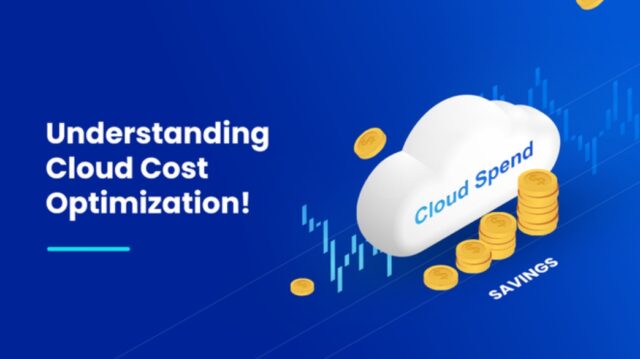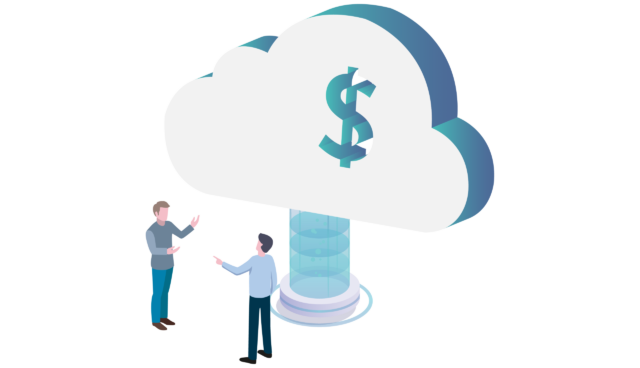
As organizations increasingly migrate their infrastructure to the cloud, it is essential to understand how to effectively manage and optimize cloud costs. Cloud cost optimization involves implementing strategies and utilizing tools to maximize efficiency, reduce wastage, and minimize expenses associated with cloud services.
In this blog post, we will delve into the key concepts and best practices for cloud cost optimization, providing valuable insights for businesses looking to streamline their cloud spending.

Understanding Cloud Costs
To embark on the path of cloud cost optimization, it is crucial to have a comprehensive understanding of the various cost components within a cloud environment. These include:
a) Compute Costs: Compute costs are associated with the usage of virtual machines (VMs), containers, and serverless resources. It is important to right-size instances, select appropriate instance types, and leverage auto-scaling capabilities to optimize compute costs.
b) Storage Costs: Cloud storage costs are incurred based on the amount of data stored, the frequency of access, and the desired durability. Employing storage tiering, archiving, and data lifecycle management practices can help optimize storage costs.
c) Network Costs: Network costs accrue from data transfer between cloud services, regions, and the internet. Understanding data transfer patterns and leveraging content delivery networks (CDNs) and inter-region transfer optimization can lead to significant cost savings.
d) Database Costs: Database costs are associated with database services, such as Amazon RDS or Azure SQL Database. Utilizing reserved instances, appropriate sizing, and optimizing query performance can optimize database costs.

Best Practices for Cloud Cost Optimization:
Implementing the following best practices can help organizations effectively optimize their cloud costs:
a) Monitor and Analyze: Establish a robust cost monitoring and analysis system to track and understand resource usage patterns. Leverage cloud provider tools, third-party cost management solutions, or custom scripts to gain visibility into spending trends and identify optimization opportunities.
b) Right-Sizing Resources: Continuously assess the utilization and performance of resources and right-size them accordingly. Downsize or terminate underutilized instances and provision resources based on actual demand, utilizing features like auto-scaling.
c) Utilize Reserved Instances and Savings Plans: Take advantage of cloud provider offerings such as Reserved Instances (RIs) or Savings Plans, which offer significant discounts for committing to usage over a specified period. Identify stable and predictable workloads suitable for RI or Savings Plan commitments.
d) Leverage Spot Instances and Preemptible VMs: Spot Instances and Preemptible VMs are available at significantly reduced prices compared to on-demand instances. Utilize these instances for fault-tolerant and non-time-sensitive workloads to optimize costs.
e) Optimize Storage: Implement data lifecycle management practices, utilize storage tiering, and leverage compression and deduplication techniques to reduce storage costs. Identify and eliminate redundant or outdated data.
f) Automate Cost Optimization: Leverage automation tools and scripts to optimize cloud costs. Automate start-stop schedules for non-production instances, implement resource tagging, and enforce cost optimization policies.
g) Consider Multi-Cloud and Hybrid Strategies: Diversifying across multiple cloud providers or utilizing hybrid cloud architectures can offer cost optimization benefits. Compare pricing models, services, and regional costs to choose the most cost-effective option for each workload.

Cloud Cost Optimization Tools
Several tools are available to assist organizations in managing and optimizing their cloud costs. These tools provide features such as cost monitoring, budgeting, resource optimization, and reporting. Some popular options include:
a) Cost Explorer (AWS): Amazon Web Services’ Cost Explorer provides comprehensive cost visibility, budgeting, and forecasting capabilities.
b) Azure Cost Management and Billing (Azure): Azure’s native tool offers detailed cost analysis, budgeting, and cost optimization recommendations.
c) Google Cloud Pricing Calculator (Google Cloud): Google Cloud provides a pricing calculator that allows users to estimate and optimize their cloud costs based on their specific requirements.

Final Thoughts
Cloud cost optimization is a critical aspect of managing cloud infrastructure efficiently and controlling expenses. By understanding the various cost components, implementing best practices, and utilizing cost optimization tools, organizations can achieve significant cost savings while maintaining optimal performance and scalability.
Regular monitoring, analysis, and proactive optimization measures will ensure that cloud resources are utilized effectively, waste is minimized, and overall cloud costs are optimized. Embracing cloud cost optimization as a strategic initiative will not only drive financial benefits but also enhance operational efficiency and competitiveness in today’s cloud-driven landscape.
Cloud cost optimization can help you make the most of your cloud costs!









